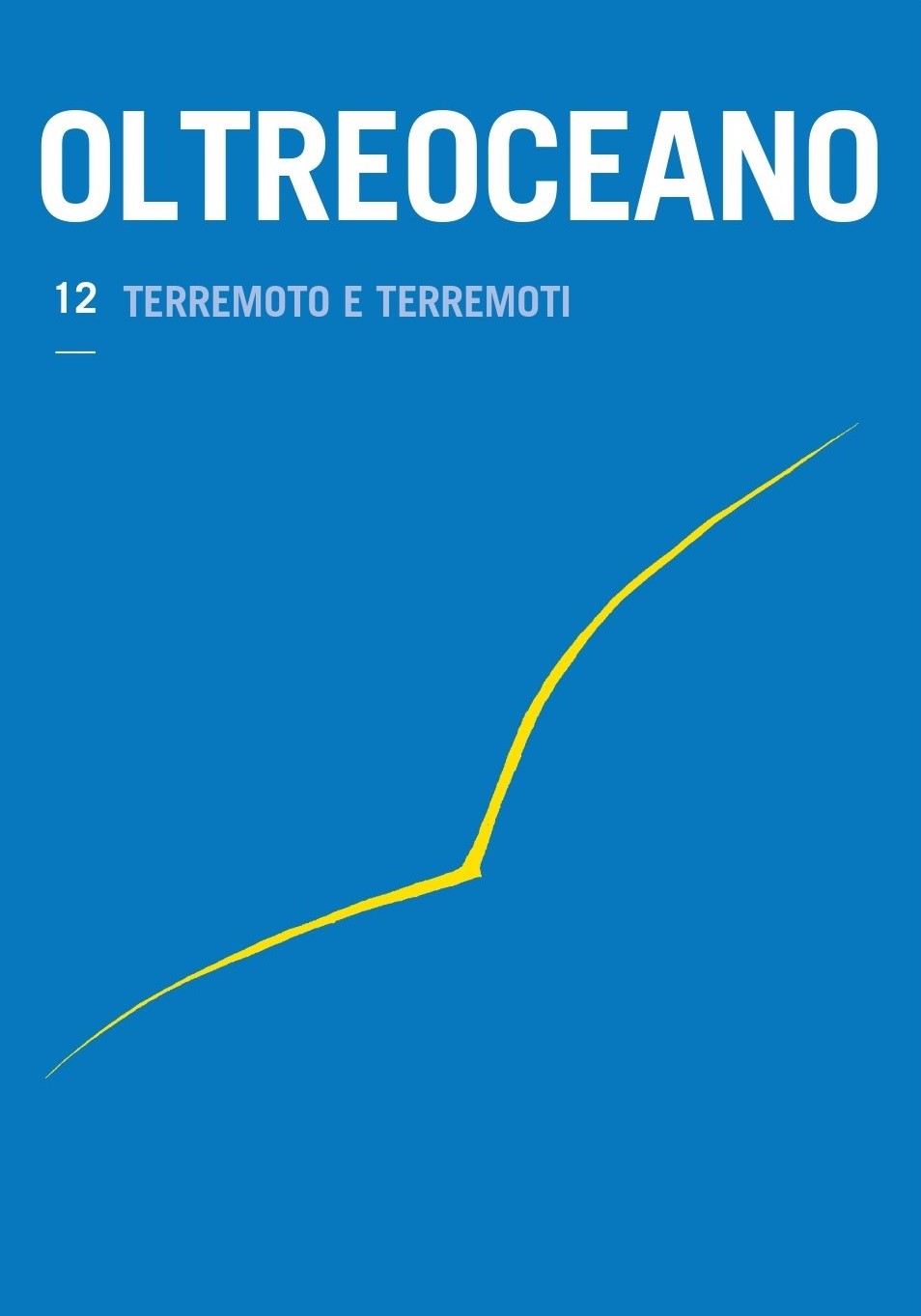Nota a Le terre che tremano (Guatemala, Salvador, Nicaragua, Honduras, Costarica, Panamà) di Mario Appelius
Keywords:
terremoti, America Centrale, Mario Appelius, fascismo, letteratura italianaAbstract
Le terre che tremano di Mario Appelius narra del viaggio in Centroamerica fra il 1928 e il 1929. Asse della narrazione è l’ingerenza degli Stati Uniti nella vicenda storica delle sei repubbliche, tema sviluppato secondo i dettami del nazionalismo fascista e del progetto di egemonia politica, ideologica e culturale sui paesi del subcontinente. Lo sviluppo della rappresentazione è governato dall’equivalenza fra instabilità politica e instabilità del suolo, fra terremoti e rivoluzioni. Si seguirà pertanto la configurazione narrativa di tale equivalenza che trasforma la geologia in ideologia, riconducendo i segni della natura entro la pratica del discorso coloniale.
A brief contribution about Le terre che tremano (Guatemala, Salvador, Nicaragua, Honduras, Costarica, Panamà) by Mario Appelius
Le terre che tremano is a report of Mario Appelius’ 1928-1929 travel through Central America. The narration revolves around the USA’s interference in the historical development of the six republics. The report embraces the precepts of fascist nationalism with and its aims to establish political, ideological and cultural hegemony on those subcontinental countries. The representation rests on the equivalence, suggested by Appelius, between political and geological instability, between earthquakes and revolutions. The article will trace the narrative design underlying such equivalence in which geology becomes ideology and natural signs are framed within the practices of colonial discourse.
Downloads
References
Appelius, M. (1928): Le isole del raggio verde: Cuba, Giamaica, Haiti, Portorico e Piccole Antille. Milano: Alpes.
Appelius, M. (1930): Cile e Patagonia. Milano: Alpes.
Appelius, M. (1930): Le terre che tremano. Guatemala, Salvador, Nicaragua, Honduras, Costarica, Panamà. Milano: Alpes.
Barzini, L. (1923): Sul mare dei Caraibi. Milano: Treves.
Cecchi, E. (1932): Messico. Milano: Treves.
Cecchi, E. (1940): America amara. Firenze: Sansoni.
Cipolla, A. (1927): Montezuma contro Cristo. Milano: Agnelli.
Fraccaroli, A. (1931): La pampa argentina. Milano: Treves.
Gadda, C. E. (1984): L’ingegner fantasia. Lettere a Ugo Betti (1919-1930). Giulio Ungarelli (Ed.). Milano: Rizzoli.
Gadda, C. E. (1987): Lettere alla sorella. 1920-1924. G. Colombo (Ed.). Nota biografica di C. Viganò. Milano: Rosellina Archinto. 1987.
Gentile, E. (2006): La Grande Italia. Il mito della nazione nel XX secolo. Roma-Bari: Laterza.
Gerbi, A. (2000): La Disputa del Nuovo Mondo. Milano: Adelphi.
Lualdi, A. (1934): Un viaggio musicale nel Sudamerica. Milano: Istituto Editoriale Nazionale.
Moura, J.-M. (1998): La littérature des lointains. Histoire de l’exotisme européen au XXe siècle. Paris: Honoré Champion.
Quartara, G. (1930): Un viaggio in Sudamerica. Milano: Treves.
Rocca, E. (1926): Avventura sudamericana. Milano: Alpes.
Scarzanella, E. & Trento, A. (2004): L’immagine dell’America Latina nel fascismo italiano. In E. Scarzanella, & A. Trento, Il mondo visto dall’Italia (pp. 217-227). Milano: Guerini e Associati.
Villa, O. (1936): Nelle terre degli Incas. Milano: Alpes.
Downloads
Published
How to Cite
Issue
Section
License

This work is licensed under a Creative Commons Attribution-NonCommercial-ShareAlike 4.0 International License.
The authors undertake to comply with the following conditions, which are considered accepted at the time of submission of their contributions.
The sending of a text implies that it is unpublished and not submitted to be published elsewhere.
1. If accepted, the author shall confer on the publisher the right to publish and distribute it both in paper form and in the online electronic edition. The published articles will be downloadable and made available in open access.
2. Provided that it correctly indicates that the first publication took place in the journal Oltreoceano. Rivista sulle migrazioni the author has the right to: a) reproduce the article in separate extracts or collected in a volume; b) publish the article on their personal website or teaching site provided that these sites are of a non-commercial nature; c) deposit the article in online archives of a non-commercial nature, linked to the institution they belong to or as part of projects for the non-commercial dissemination and open access of scientific works.
The use of contributions by third parties, for commercial or otherwise unauthorized purposes, is not allowed. The publisher declines all responsibility for the unauthorized use of the material published in the journal.












